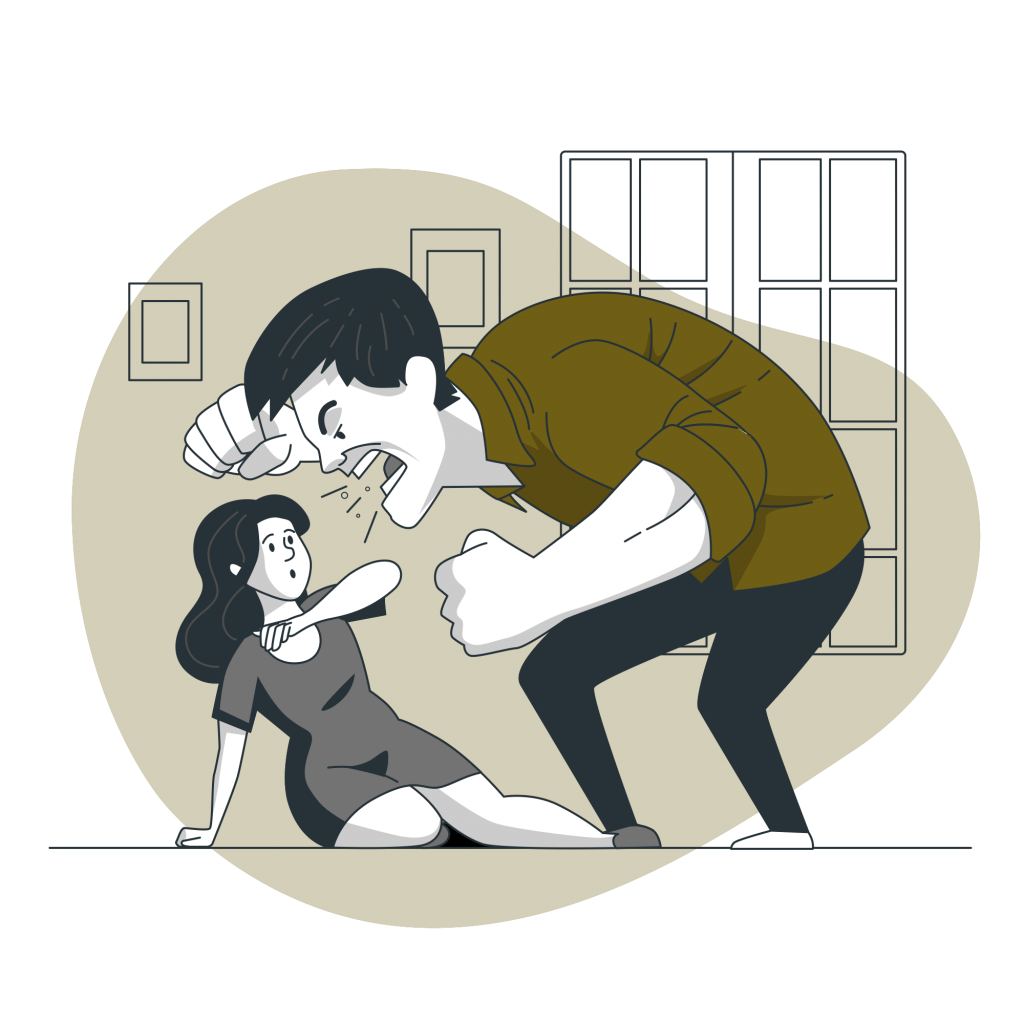What are the current regulations in Hong Kong?
Learn about the legal protections for image-based violence under the new Crimes Ordinance. Discover the key elements of the law, related case studies, and the criteria for convictions.
Image-Based Sexual Violence (IBSV) refers to any non-consensual creation, distribution, or threat to share intimate images or videos of an individual.
An ‘intimate image’ refers to an image that depicts the intimate part of an individual, whether bare or covered by underwear, e.g.: genital, anal, breast area, and genitalia reconstructed through gender affirmation surgery.
Previously, there was no specific offense related to up-skirting or voyeurism. Statutes such as S.160 of the Crimes Ordinance related to “loitering” and S.17B of the Public Order Ordinance concerning “disorder in public places” provided limited protection against image-based violence in public settings.
The recent legal amendments in Hong Kong were implemented to rectify a notable gap in criminal law. The updated legislation now offers broader safeguards specifically targeting image-based sexual violence. This expansion became imperative due to the absence of laws directly addressing image-based sexual abuse, resulting in instances of police inaction.
The introduction of four new criminal offenses centered on image-based sexual violence on October 8, 2021, signifies a significant advancement. These amendments grant courts the authority to mandate the removal of intimate images, empowering individuals to comprehend their rights, advocate for themselves and others, and ultimately foster a safer and more secure community for everyone.
Four key offences hold distinct roles:
- S.159AAB involves secretly observing individuals in private settings without consent, potentially including the whole body, and it need not necessarily involve intimate body parts, as long as the observation occurs in a private context.
- S.159AAC focuses on recording intimate body parts without permission.
- S.159AAD concerns sharing images derived from these acts without consent.
- S.159AAE deals with the unauthorised publication or threat of publication of intimate images to cause distress or humiliation, irrespective of how the images were obtained.
Even though the law may allow for a maximum penalty of five years, judges consider all aspects of the case before deciding on a sentence. These factors may include the seriousness of the crime, its impact on victims, any past criminal behaviour, the defendant’s remorse, and the need to deter future wrongdoing. By doing so, they ensure that the punishment fits the crime and takes into account the individual factors involved.
Section 159AAB Voyeurism

Elements
- Observation or Recording: The act involves surreptitiously observing or recording an individual in specific situations:
- Observes (with or without equipment) or records an individual in a place where they can reasonably expect to be nude, reveal an intimate part, or engage in an intimate act; or
- observes or records an intimate part or an intimate act for the purpose of viewing or capturing it; or
- observes or records an individual for a sexual purpose.
- Expectation of Privacy: The individual being observed or recorded (the subject individual) must be in circumstances where there is a reasonable expectation of privacy.
- Consent Disregard: The person committing the offence disregards whether the subject individual consents to being observed or recorded.
- Facilitation of Offense: Apart from the direct acts of observation or recording, the offence also includes:
- Installing or operating equipment.
- Constructing or adapting a structure to enable the commission of the voyeuristic act by oneself or another person.
Examples

Recording individuals in a public restroom

Watching a resident change clothes from outside without their consent
Related cases
香港特別行政區 對 何杰威 [2023] HKCU 3427
Mr. X sent a short video to a friend showing Ms. Y being forced into a sexual act. The judge initially recommended a six-month sentence, later reduced to four months as Mr. X admitted guilt. Eventually, he was sentenced to 17 months in prison for this and other crimes.
香港特別行政區 訴 許樂添 [2021] HKCU 5890
(this case occurred before the ordinance was implemented)
Mr. X was found guilty of secretly taking inappropriate photos of Ms. Y, leading to charges of common assault and behaving indecently in public.
Before the legal changes, proof of consent and the act occurring in a public area (公眾場所) were required. However, post-reforms, the focus shifted to the nature of the offence itself, making it easier to prosecute without the need to establish the location or consent of the victim. This shift increases the likelihood of wrongdoers facing prosecution for acts that offend public decency.
Section 159AAC Non-consensual Recording of Intimate Parts

Elements
- Recording Intimate Parts:
- Recording intimate body parts that are not usually visible, or
- Using equipment to view or record intimate parts under clothing or through openings in clothing.
- Purpose and Consent:
- Acting for a sexual purpose or dishonestly.
- Disregarding whether the individual being recorded or observed has consented.
Examples

Upskirting

downblousing
Related cases
香港特別行政區 訴 馮希文 [2024] HKCU 1524
Mr. X, a teacher, faced 25 charges under Hong Kong law for secretly recording private body parts, commonly referred to as “upskirting.”
Due to his role as a teacher and the increased seriousness of offences within the school setting, the court imposed a total sentence of 16 months, taking into account the impact and nature of the crimes, especially those involving his students and colleagues.
香港特別行政區 對 葉子喬 [2023] HKCU 3650
In this case, Mr. X was caught taking secret photos under girls’ skirts and sharing them online. Police saw him following a girl on a train, staring at her, and then taking more inappropriate pictures of her at a station. Mr. X admitted to what he did, saying he wanted to sell these pictures on the internet.
The court sentenced Mr. X to 10 weeks in prison for secretly taking inappropriate photos and videos of schoolgirls to sell online. Given the gravity of the offenses, the court determined a starting point of 6 weeks’ imprisonment for each charge as appropriate. Despite his plea and reasons for the crimes, like needing money for his father’s medical bills, these did not reduce his sentence much. The defendant’s admission of guilt helped slightly, cutting his sentence by one-third to 4 weeks per offence.

Key Takeaways
The fact that the defendants received sentences of 10 weeks and a total of 16 months, respectively, may raise concerns about the adequacy of the punishment in proportion to the harm caused and the breach of trust in the community, especially when considering the maximum penalty allowed by law.
Section 159AAD Publication of Images Originating from Offences

Elements
- Publication of Image:
- Publishing an image of an individual.
- Image Origin:
- The image must originate from the commission of an offense under section 159AAB(1) or 159AAC(1).
- Knowledge and Consent:
- Knowing that the image is from the commission of the specified offence or being reckless about it.
- Disregarding whether the individual in the image consents to its publication.
- Immateriality of Offender:
- It doesn’t matter if the specified offence was committed by the person publishing the image.
Examples

Sharing a secretly taken photo of someone's intimate body part without their permission

Uploading a video of a person's private moment captured without consent
Section 159AAE Publication or Threatened Publication of Intimate Images Without Consent

Elements
- Publication of Intimate Images without Consent:
- Publishing an intimate image without consent.
- Intent or recklessness to cause distress to the individual.
- Disregard for the individual’s lack of consent to the publication.
- Threatening to Publish Intimate Images:
- Making a threat to publish an intimate image of an individual without consent.
- Intent or recklessness to cause distress to the individual.
- Disregard for the individual’s lack of consent to the threatened publication.
- Irrelevant factors:
- Where the intimate image originated (locally or abroad).
- How the image was obtained.
- Consent of the individual in obtaining the image.
- Timing of image creation.
- Whether the individual provided the image.
- Note: The offender’s publishing capacity is irrelevant.
Examples

An individual maliciously circulates intimate videos of their ex-partner to the ex-partner's family members

A photographer who secretly captures intimate moments during a private photo shoot uploads these photos to public discussion forums without the model's consent
Related cases
HKSAR v PUN Cham-tung – [2024] HKCU 3073
The victim, Ms. Y, was his ex-girlfriend. After their breakup in May 2023, the defendant sent threatening messages demanding reconciliation, or he would publish intimate video clips of her on social media. Subsequently, he shared multiple explicit videos and photos depicting Ms. Y without her consent.
Given his age, mental health issues, and the need for rehabilitation, the judge imposed a Training Centre Order for all six charges instead of prison time, emphasizing the importance of continued support and training for the defendant.
The legal landscape surrounding deepfakes
- The law also specifically addresses “deep fake” images, which are digitally manipulated photos and videos that place someone’s face onto another person’s body. These manipulated images can misrepresent individuals in compromising or humiliating ways. Currently, there is no case law specifically addressing convictions under the new provisions regarding deep fakes.
- Here is a possible illustration of how deep fake images could lead to a conviction under the offence.
- A public figure, becomes the target of a malicious act when an individual creates a deep fake video that places her face onto an adult film actor’s body, making it appear she is engaging in explicit acts. The individual may be charged under the law for publishing an intimate image without consent, as he acted recklessly and intended to cause harm.
Section 159AAL Disposal Order

Arrangement of a Disposal Order
- Victims can seek an order from a magistrate to remove, delete, or destroy an image related to a specified offence by applying through the Secretary for Justice. The order ensures the prompt removal of these images, providing a legal mechanism for victims to protect their privacy and dignity.
Requirements
In an application made under S.159AAL(1) for a disposal order, the following requirements must be met:
For the Image Subject to the Disposal Order:
- The image must be identified.
- Proof of the image being intimate and of an individual.
- Relevance of the image to criminal proceedings.
For the Person Subject to the Disposal Order:
- Identification of the person by particulars.
- Evidence of control or possession of the image. (e.g. Records of IP addresses)
- Demonstration of capability to carry out specified actions in the disposal order application.
Application procedure
Applications must be made in writing and filed with a magistrate. Before issuing a disposal order, the magistrate must summon the relevant person to appear and make representations. Others with a vested interest in the image can also attend the hearing.
However, if the summons cannot be served due to reasonable efforts being unsuccessful, if the person cannot be found, if they refuse service, or if they do not attend the hearing, the magistrate may proceed to make or review the disposal order based solely on written materials, without requiring a hearing or witness testimony.
After a disposal order is issued, the magistrate retains the authority to review and potentially modify the order. This review process can be initiated under the following circumstances:
- Magistrate’s Initiative: The magistrate can independently decide to review the disposal order.
- Application by Secretary for Justice: The Secretary for Justice can apply for a review of the disposal order.
- Request by Affected Parties: The person affected by the order or any concerned individual can request a review of the disposal order.
Penalty
Non-compliance with a disposal order results in a maximum fine of $100,000 and one-year imprisonment upon conviction.

You have the right to control who can view your intimate images. Even if you consented to the taking of those images, that does not automatically grant permission for their disclosure. Separate consent is required. Sharing your intimate images without your consent constitutes image-based sexual violence.
A person may commit an offence by publishing an image that involves peeping or clandestine photography, regardless of whether they took the image themselves. This applies to sending such images via instant messaging, uploading, or reposting in discussion forums.
The Ordinance is gender-neutral. Any act that fulfills the elements of voyeurism constitutes an offence, regardless of the gender of the individuals involved.
If a person secretly observes or records someone without consent in a location where there is a reasonable expectation of privacy (such as a changing room, toilet cubicle, private bedroom, subdivided flat, or locked office), that person may still be committing an offence, even if the individual is fully clothed and has not exposed any intimate parts.
Consent to filming does not mean consent to distribution or publication, as everyone has the right to decide who can view their private images. In reality, most victims have their intimate images maliciously distributed without their knowledge. This situation often arises in disputes after breakups, known as ‘sexual retaliation’ or ‘Revenge Porn’ in English.
For the full text of the Crimes Ordinance (Cap. 200), please visit the following link